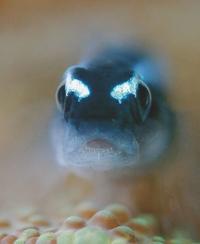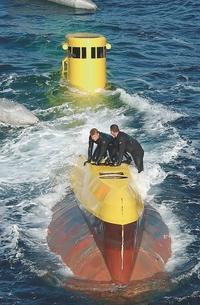Dark light dark light
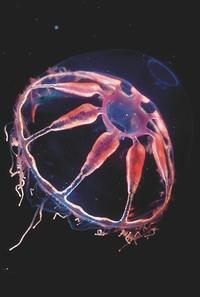
To survive in the animal kingdom a point of exhibitionism is necessary. Each species has its own beauty criteria -- since the macaques only have to do with the exaltation of the naked snake and the pride they show -- but, above the opinion that the rest of animals can have on these criteria, the strategies are useful in all cases.
The people who live in open sea have developed throughout the evolution completely different strategies to the others. The emission of vibrations and chemical signals are some of the most used, but there is another strategy: bioluminescence. Some animals create light to illuminate themselves so that the people of the species can find them in full darkness, attract their prey, or chase away their enemies. After all, the existence of a flashlight of its own allows many options, not just for courting.
Bioluminescence is a complex and costly strategy, so among terrestrial animals only a few use it. In the sea, however, it is very useful and is used by 90% of the animals that inhabit depths between 200 and 1,000 meters. In fact, most terrestrial animals live on the surface, very close to each other; somehow, we move in two dimensions. But how will the fish that live in open sea and at an incredible distance find themselves? The key is in the light.

Cold light cold light
In the case of plants, it is fascinating their ability to obtain and live energy only through solar rays. Light gives them life, they do not need complex metabolic strategies like animals. But even more surprising is to see that many living beings can make the opposite way to photosynthesis: they use energy and produce light. Like a bulb, but in a much more efficient way, almost 100% efficiency.
It is easy to detect the energy loss of a bulb, which if touched after a moment of ignition, is very hot until almost burning your fingers. In short, an important part of the energy that is channeled so that the bulb threads shine is lost in the form of heat; only 30% of the energy becomes light. However, bioluminescent living beings convert all chemical energy into light. They generate cold light.

The world in green blue
To all these living beings gives the light a compound called Luziferina. Numerous types of luciferin have been observed, but all of them use the same chemical mechanism to generate light. Like all processes related to the emission and reception of light in nature, the luciferous play with electrons. The process is conducted by an enzyme called Luziferasa, which oxidizes at the same time it is excited. Electrons gain energy in this process and when they return to their original state of energy and relax free the photon, that is, the light.
The light is always visible. In fact, the molecular structure of all the luciferins is formed by aromatic rings, characterized by the energetic jump that the electrons must give to relax, is equivalent to the energy of visible light.
However, in spite of the visible light, the spectrum of the lights seen in the sea is very wide and, to a large extent, the very structure of luciferin delimits the color of the resulting light. In the violuminescent lights of the sea a spectral spacing of purple to red - purple, blue, green, yellow, orange or red - is observed, although the predominant colors are blue and green. That is, a light that has a wavelength in the spectrum of between 470-490 nanometers. It is possible that the blue color is the most advantageous from the evolutionary point of view, since the water of the sea is especially transparent to the blue light and, therefore, this is the most suitable wavelength for the light to reach anywhere in the sea; it reaches farther than any other color.
But the complexity of bioluminescence does not end here. Many animals, in addition to basic light generating cells, have developed complementary and very complex optical structures: sometimes to emit more light; sometimes they act as reflective screens to be able to direct the light towards a given direction; as in the lanterns, there are also focus and/or diffused light beam structures; and finally, light color change filters.
Evolutionary convergence
This chemical trick to create light has been "invented" at least 30 times in nature. It has been conceived independently in different eras, ecosystems and species and has served to address the specific problem. If one is observed one by one, it is quickly observed that they have developed independently, since they are completely different the luciferins used by some and others to produce light and its luziferous enzymes.
His presence in nature demonstrates the importance of violence to survive in open sea. It is a true biological need for residents. Now, behind this unique chemical strategy, hundreds of different uses devised by marine animals appear.
Many use it to look for a couple. They use special light codes to send messages like "the female looking for a healthy male". In these cases, the rhythm of the flashes indicates to the one who can be a couple looking for a couple, and on other occasions the own form of the light organs. In all these cases, sexual maturity limits the development of bioluminescent organs by fish.
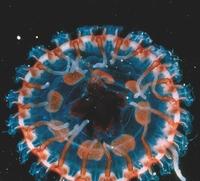
Melanostomias valdivia (black dragonfish) lives in the waters of Hawaii and develops a completely different adaptation that is very useful. It has two biolumminescent organs, one generating green blue light and another generating infrared light. Most animals living in the deep sea cannot see infrared light, so Melanostomias valdivia uses it as a flashlight to spy on their prey without warning.
Cephalopods use bioluminescence to camouflage. The upper part of the body darkens or hides by illuminating the ends of the arms on predators that circulate through the water. They offer short and quick flashes when they feel danger.
The animals that inhabit at a lower depth have given it another use. They get the natural light from above, which makes them a serious problem without wanting, since if the predator approaches from below, it can be perceived against the current. In these cases, bioluminescence is used to make contraluz. They regulate the intensity and wavelength of the light emitted in the ventral zone, so that it corresponds with the ambient lighting. Thus, the predator becomes almost invisible and simply abandons.
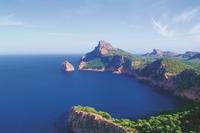
A similar strategy uses the cigar shark (Isistius brasiliensis) to prevent its prey from seeing it: it camouflages the belly by opposing bioluminescence. But the strategy is even more complex: a piece of skin close to the mouth has no bioluminescent organ, so, seen from below, only the dark silhouette of a small fish is seen instead of the shark. When the fish that is going to eat with the knife approaches, the shark sticks like a suction cup and puts his teeth, bites and, in an instant, leaving an almost perfect circular mark that a cigarette would make him turn off on the skin.
Lately, another use of bioluminescence is gaining special interest: researchers want to know if they use light as a language, as they suspect it can be useful as a system of transmission of information between two individuals of the same species.
Also the smaller ones
Despite the complex strategy of bioluminescence, it has not been developed only in the animal kingdom. Many animals acquire the ability to emit light thanks to the bacteria, which live inside through symbiosis and nutrient exchange. The Systellaspis weaks quisquilla launches the jet of bioluminescent bacteria to anyone who wants to attack. In the black darkness of the sea, the luminescent brightness can blind and disorient the predator for an instant. Enough time to leave.
Dinoflajelados are also microscopic components of phytoplankton and are one of the most abundant living beings generating light. They are only 20-500 microns plants, but they illuminate to defend themselves. When the Copépod type crustaceans approach dinoflajelados, the little ones emit flashes of light that, in addition to the copepods, awaken the attention of the largest fish in the area. As a consequence, the copepods must leave in peace the dinoflajelados and flee from the fish.
Thus, from the most complex to the simplest, bioluminescence is an essential tool to survive the marine darkness. Not only because of the scarcity of light, but because in the sea life is not limited to the bottom, they are much broader ecosystems. These two factors condition the way of life in which we live, and the different way of life and evolution of living terrestrial and marine beings in all these millennia is evident.
